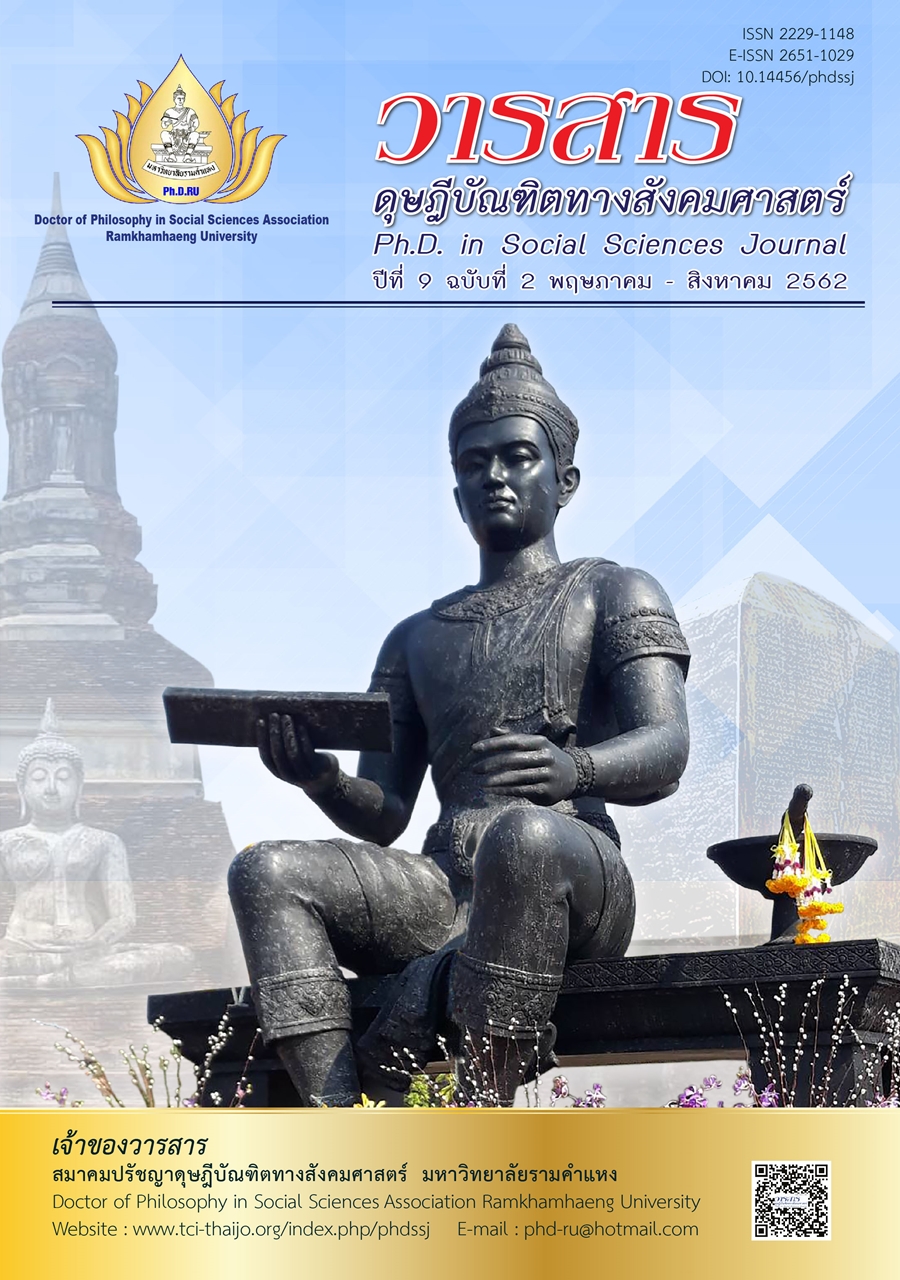The Effect of Spiritual Care and Physical Environment in Islamic Culture on Brand Advocacy
Main Article Content
Abstract
The research objectives were (1) to study the effect of medical service factors in Islamic culture of private hospital (2) To apply the Study results to design of cultural service of Hospital (3) to fine the effect of medical services model in Islamic culture on brand advocacy
In this research consists of the quantitative and qualitative researches. The quantitative research sampled 287 Muslim clients who received the medical services from Phyathai Nawamin Hospital in long term or the clients with the brand advocacy behavior. On the other hand, qualitative research sampled 10 Muslim clients who are the experts of Islamic Principles. The data were analyzed, summarized, and discussed quantitatively, using mean percentile Standard Deviation Coefficient of Variance and structural equation modeling (SEM) by factor analysis technique. The qualitative approach implemented by in-depth interviews and observation was used to support the findings of this study. The results were as follows.
The result of quantitative research reveals that the spiritual care tends to have direct effect on satisfaction, trust, and brand advocacy of the clients significantly. The satisfaction of clients has a positive effect towards trust and clients’ trust has a positive effect towards brand advocacy in terms of statistical significance. It was also found that the result of qualitative research is accordingly to the result of quantitative research as aforesaid.
Article Details
Academic articles, research articles, and book reviews in the Ph.D. in Social Sciences Journal are author’s opinions, and not the publisher’s, and is not the responsibility of the Ph.D. in Social Sciences Journal Philosophy Association, Ramkhamhaeng University. (In the case that research is done on human, the researcher has to be trained in Ethics for Doing Research on Human Training and has to produce the evidence of the training).
References
Al-Debil, H., & Al-Waely, D. F. J. (2015). The effect of services marketing mix dimensions on attracting customers and retaining them: The case of jordanian insurance companies. International Journal of Marketing Studies, 7(5), 132-146.
Alrubaiee, L., & Alkaaida, F. (2011). The mediating effect of patient satisfaction in the patients perceptions of healthcare quality-patient trust relationship. International Journal of Marketing Studies, 3(1), 103-127.
Barney, J. B. (1991). Firm resources and sustained competitive advantage. Journal of Management, 17(1), 99-120.
Boonmalert, W., & Phoothong, B. (2017). Patterns and strategies of halal food retail business: A case study of Bangkok Metropolitan. Dusit Thani College Journal, 11(Special Issue), 267-280. [In Thai]
Clark, P. A., Drain, M., & Malone, M. P. (2003). Addressing patients emotional and spiritual needs. Joint Commission Journal on Quality and Safety, 29(12), 659-670.
Cortina, J. M. (1993). What is coefficient alpha?: An examination of theory and applications. Journal of Applied Psychology, 78(1), 98-104.
Hair, J. F., Black, W. C., Babin, B. J., Anderson, R. E., & Tatham, R. T., (2006). Multivariate data analysis. Englewood Cliff, NJ: Prentice Hall.
Herzberg, F., Mausner, B., & Snyderman, B. B. (1959). The motivation to work (2nd ed.). New York: Wiley.
Hill, S., Provost, F., & Volinsky, C. (2006). Network based marketing: Identifying likely adopters via consumer networks. Statistical Sciences 21(2), 256-276.
Hunt, S. D., & Morgan, R. M. (1994). The commitment-trust theory of relationship marketing. Journal of Marketing, 58(3), 20-38.
Leininger, M. (2002). Culture care theory: A major contribution to advance transcultural nursing knowledge and practices. Journal of Transcultural Nursing, 13(3), 189-192.
Maslow, A. H. (1943). A theory of human motivation. Originally Published in Psychological Review, 50(4), 370-396.
Maslow, A. H. (1970). Motivation and personality (2nd ed.). New York: Harper & Row.
Muslimpopulation. (2017). World Muslim population. Retrieved from https://www.muslimpopulation.com/World
National Statistical Office. (2013). The 2012 private hospital survey. Ministry of digital economy and society, Bangkok, Thailand. [In Thai]
Sathiyaseelan, T., & Gnanapala, W. K. A. C. (2015). Service quality and patients’ satisfaction on ayurvedic health services. American Journal of Marketing Research, 1(3), 158-166.
Schwartz, S. H. (1977). Normative influence on Altruism. In L. Berkowitz (Ed.), Advances in experimental social psychology (Vol. 10, pp. 221-279). New York: Academic.
Souar, Y., Cherifi, D., & Benhabib, A. (2015). The impact of customer satisfaction for their loyalty with the existence of trust and commitment as intermediate variables: The case study of the Algerian Mobilis Telecom. Management, 5(1),1-5.
Susanta, A. T., Idrus, M. S., & Nimran, U. (2013). The effect of relationship quality on customer advocacy: The mediating role of loyalty. IOSR Journal of Business and Management, 10(4), 41-52.
Von Neuman, J., & Morgenstern, O. (1947). Theory of games and economics behavior. Princeton, NJ: Princeton University Press.
Wernerfelt, B. (1984). A Resource-based view of the firm. Strategic Management Journal, 5(2), 171-180.
Yang, J.-H., & Yoon, J.-A. (2015). Factors affecting the customer satisfaction of cancer patient. Advanced Science and Technology Letters, 88, 176-180.
Yusuf, I. (2016). The Middle East and Muslim Southeast Asia: Implications of the Arab Spring. Retrieved from https://www.oxfordislamicstudies.com/Public/focus/essay1009_southeast_asia.html
Zarei, E., Daneshkohan, A., Khabiri, R., & Arab, M. (2014). The effect of hospital service quality on patient’s trust. Iranian Red Crescent Medical Journal, 17(1), 2-5.

